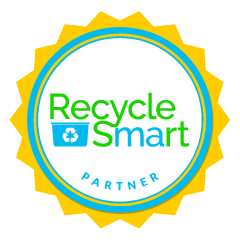Thankful, Not Wasteful: Tips for Reducing your Holiday "Foodprint"
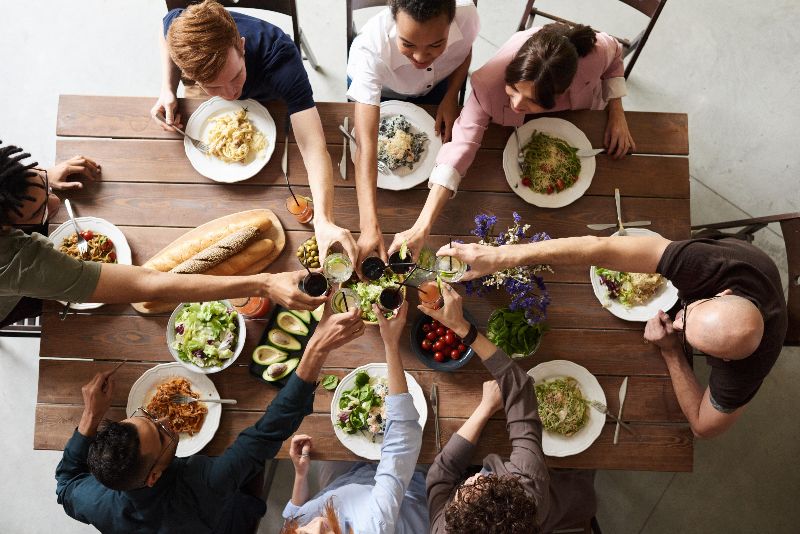
With the holiday season fast approaching, we would be remiss if we didn’t talk about the topic on all of our minds…. food.
Despite our love of Thanksgiving leftovers – it turns out we aren’t that good at gobbling up all of our food, especially at the holidays. Each year we throw out over 200 million pounds of turkey alone during the week of Thanksgiving[1]. Over the course of a year, up to 40% of the food in the U.S. goes uneaten[2] – food that could have benefited the one in 11 Massachusetts residents that is considered food insecure[3].
The good news is that there are simple things we can all do to decrease wasted food (and save money). Here are 5 tip to reduce our “foodprint” during the holidays:
- Use the Guest-imator. If you are hosting during the holidays, the Guest-imator is the perfect tool to help you plan out how much food to buy. Don’t worry- it accounts for those leftover meals too.
- Get storage savvy. Soggy celery? Sprouting onions? Save The Food’s interactive storage guide has tips and tricks for how to store your food so it lasts as long as possible (and what to do with that spinach that has seen better days).
- Compleat it. We often overlook the odds and ends when cooking – from potato peels to the end slices on a loaf of bread. Love Food Hate Waste is full of recipes and tips to help you make the most of your food – from root to shoot. Those carrot tops? They would make an excellent (and nutritious) pesto.
- The freezer is your friend. Can’t stand the thought of eating another turkey sandwich? Freeze it! Almost any leftovers can be frozen and you will thank yourself later when you don’t feel like cooking.
- Compost it. Despite our best efforts to meal plan and use up the foods that are past their prime – we will inevitably end up with some food that we just can’t salvage. Composting is an easy and inexpensive way to keep food waste out of our landfills and incinerators. Don’t have access to curbside compost pickup in your community? Learn how to compost at home.
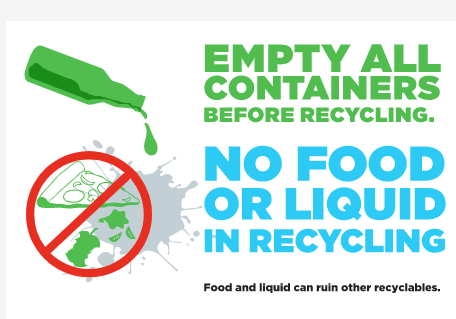
Our day dreams about turkey, stuffing, and cranberry sauce can quickly become a nightmare for the folks at the recycling sorting facility. Food and liquids are one of the top “contaminants” or problem items in our recycling bins. Food and liquids can attract pests, impact the recyclability of the paper and cardboard in the bin, and make a mess for the workers to sort through at the recycling center. That mostly empty can of pumpkin or tub of crispy fried onions doesn’t need to be squeaky clean, but it does need a quick rinse.Or, grab a leftover napkin from the dinner table and wipe out the food residue.Rinse or wipe — both do the trick!
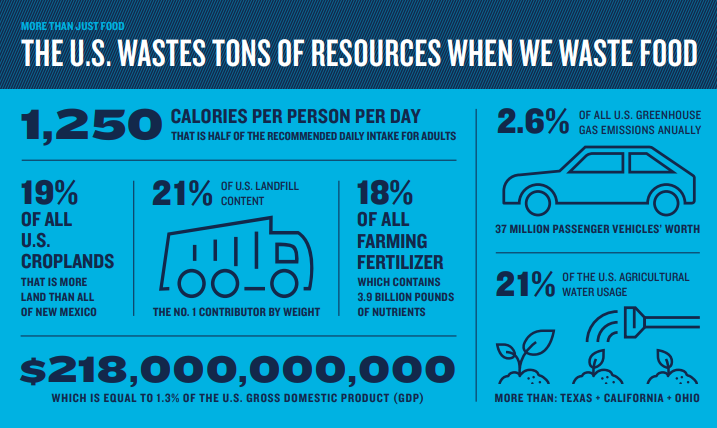
- Households are responsible for the largest portion of all food waste. The average person (in the U.S.) throws away 238 pounds or about $450 of food each year – ReFED
- Reducing food waste by just 15% could feed more than 25 million Americans every year – Natural Resources Defense Council
- Food materials make up more than 25% of what we throw away in Massachusetts – Massachusetts Department of Environmental Protection
- Massachusetts banned the disposal of food and other organic wastes from businesses and institutions that dispose of more than one ton of these materials per week. Since the ban went into effect in 2014, overall food donation in the state has increased 22% and the (amount of food) that is composted or anaerobically digested has increased 70% – Massachusetts Department of Environmental Protection
- Food waste is responsible for 8% of annual greenhouse gas emissions – World Resources Institute
Partner Spotlight: Town of Danvers
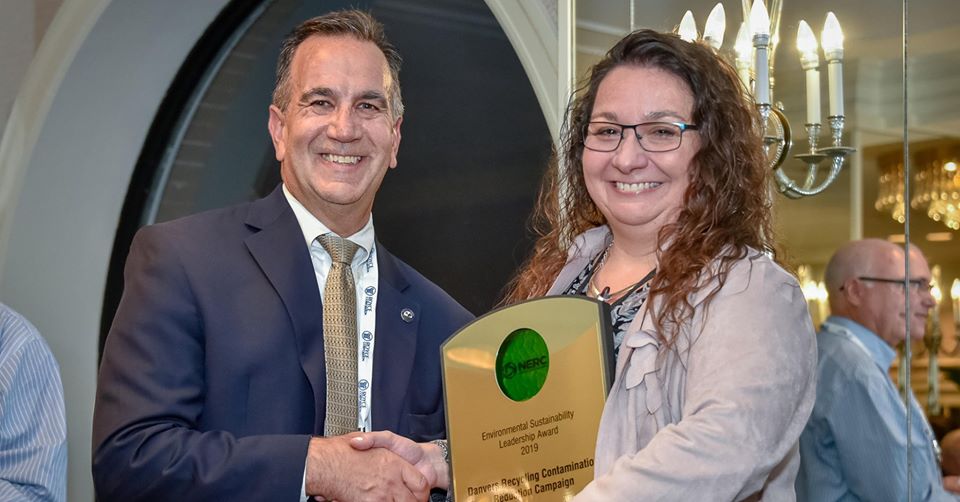
Gail Bernard, Program Coordinator for Danvers DPW, accepts the Northeast Recycling Council (NERC)’s Public Sector Environmental Sustainability Leadership Award at the 2019 NERC Conference in October.
Ever wonder if your recycling outreach efforts really make a difference? The Town of Danvers has shown that a well-planned educational campaign can positively impact the quality (and quantity) of residential recycling. After a 5 week campaign – this award-winning recycling program saw an increase in residential recycling tons and cleaner material. Danvers collects recyclables in two streams – paper and containers. Paper contamination dropped 10% and a container contamination dropped 15%. The campaign included regular posts on Facebook and Twitter about recycling contamination paired with tagging and leaving behind contaminated bins at the curb.
Danvers used several Recycle Smart resources in their campaign – including a customized dual- version of Smart Recycling Guide, sharing Recycle Smart social posts, embedding the Recyclopedia on their website, and adapting the Recycling IQ Kit “oops tags” into stickers for their recycling hauler to leave on contaminated bins.
For more on how Danvers is utilizing Recycle Smart MA materials to get the word out, visit: www.danversma.gov/recycling-guidelines/.To become a Recycle Smart Partner, click here.
We're Tri-Lingual!
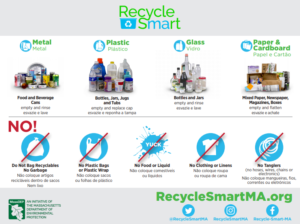
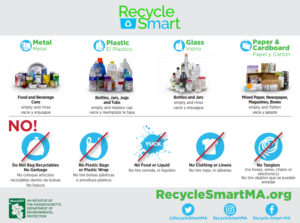
You can download the guide online at: recyclesmartma.org/smart-recycling-guide. Want to customize the guide for your community? Find the fillable pdf versions here.
The Recycle Smart Team at MassDEP
